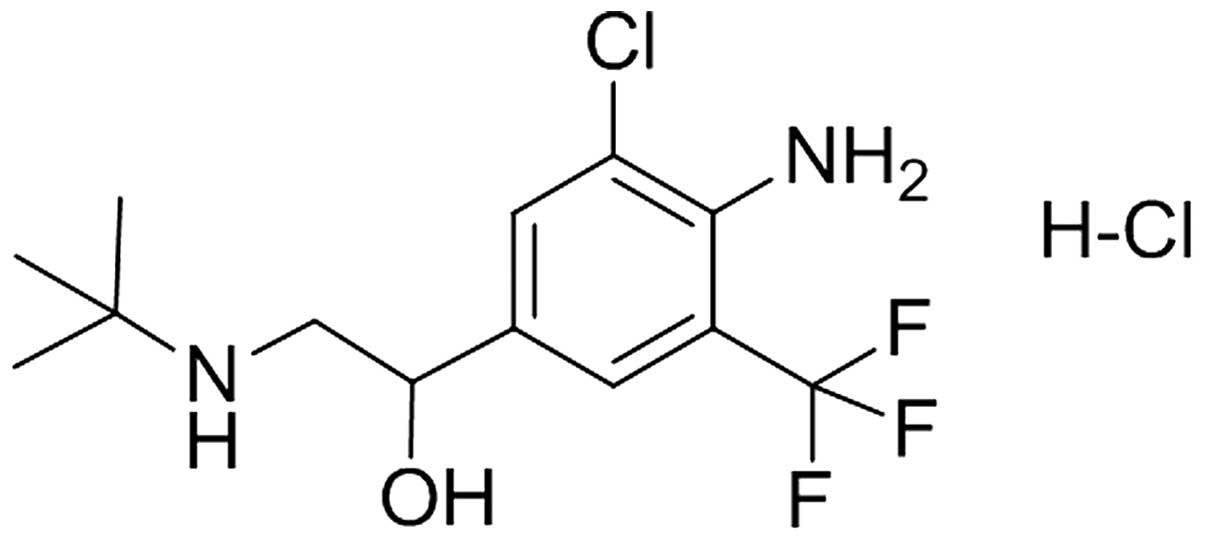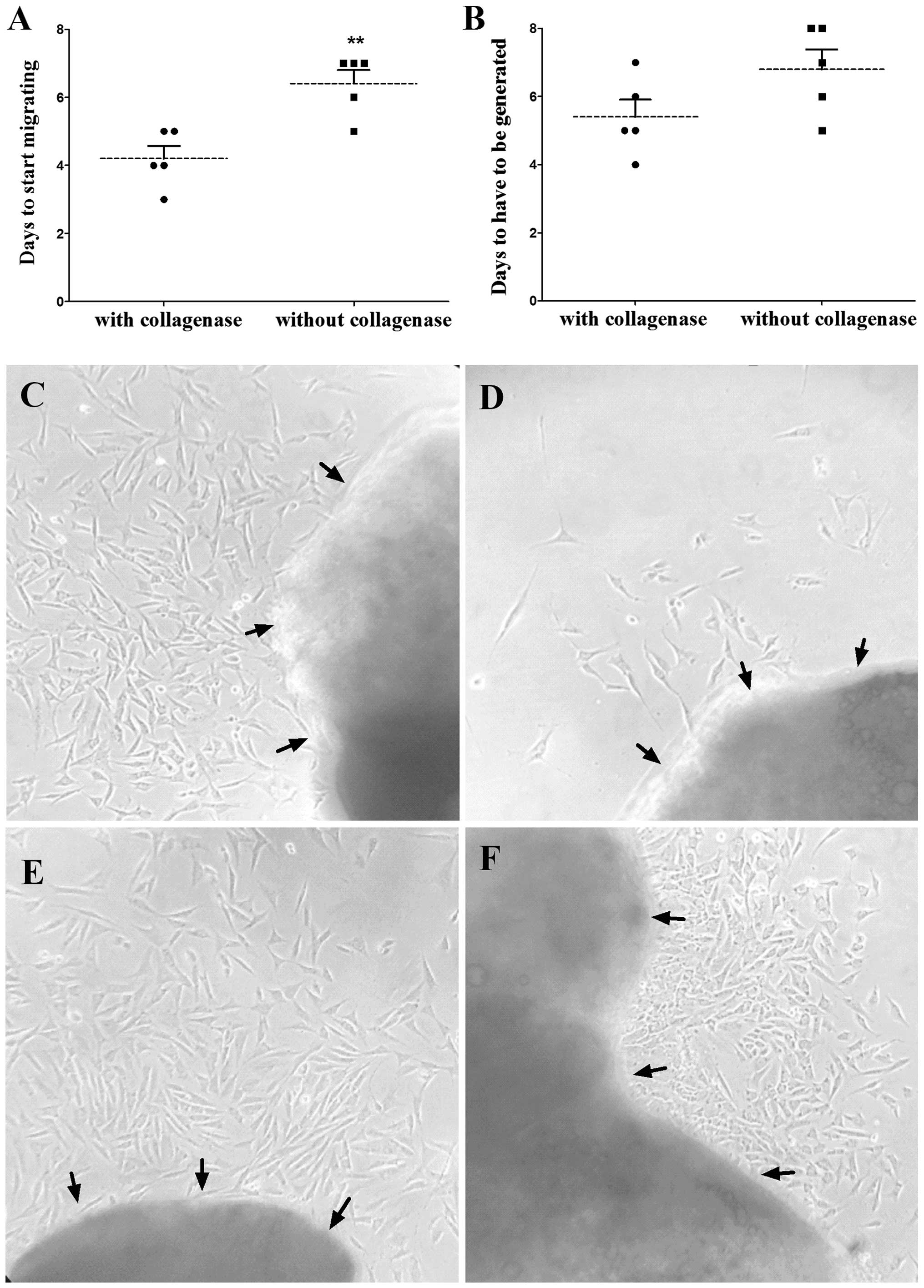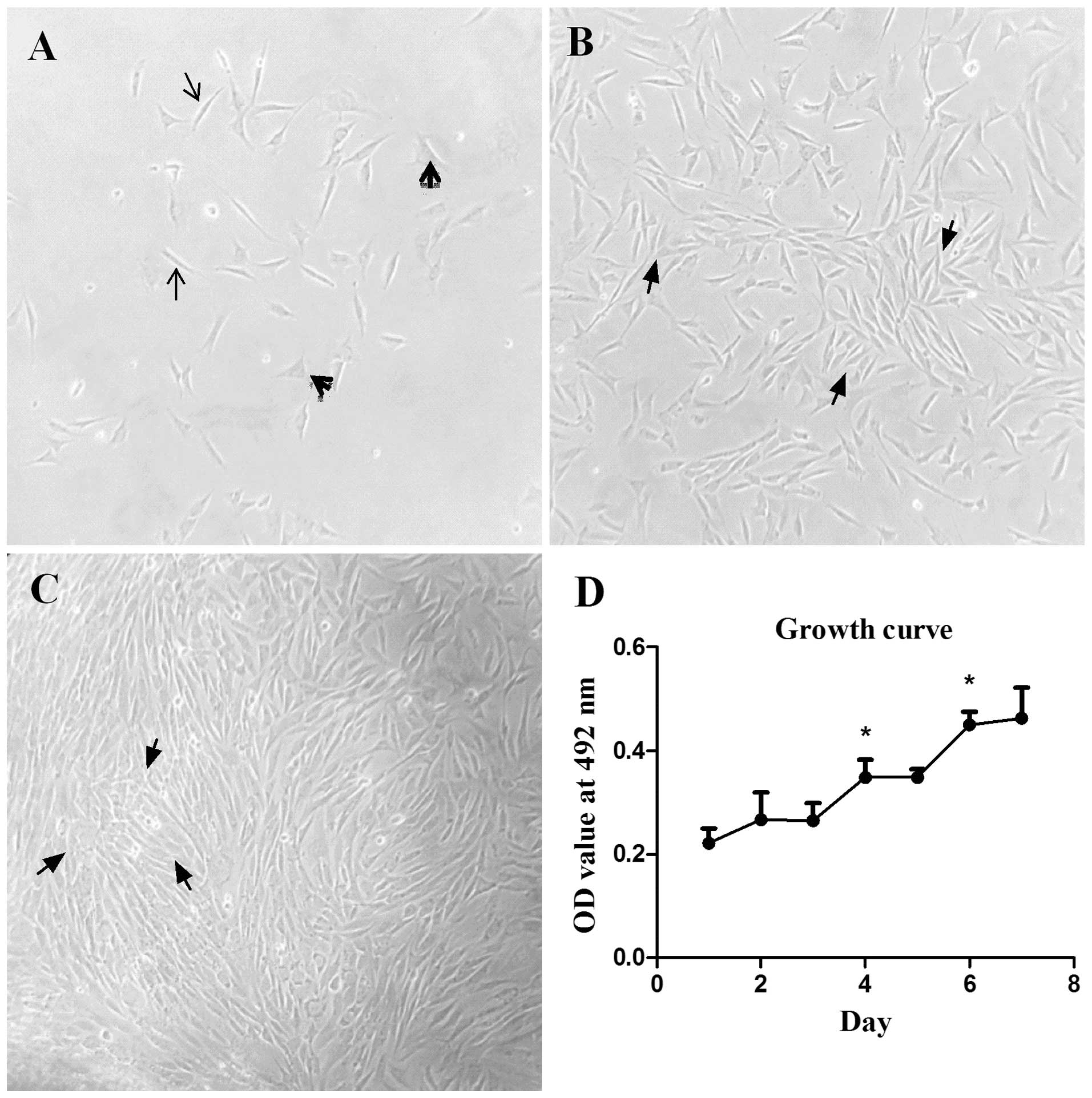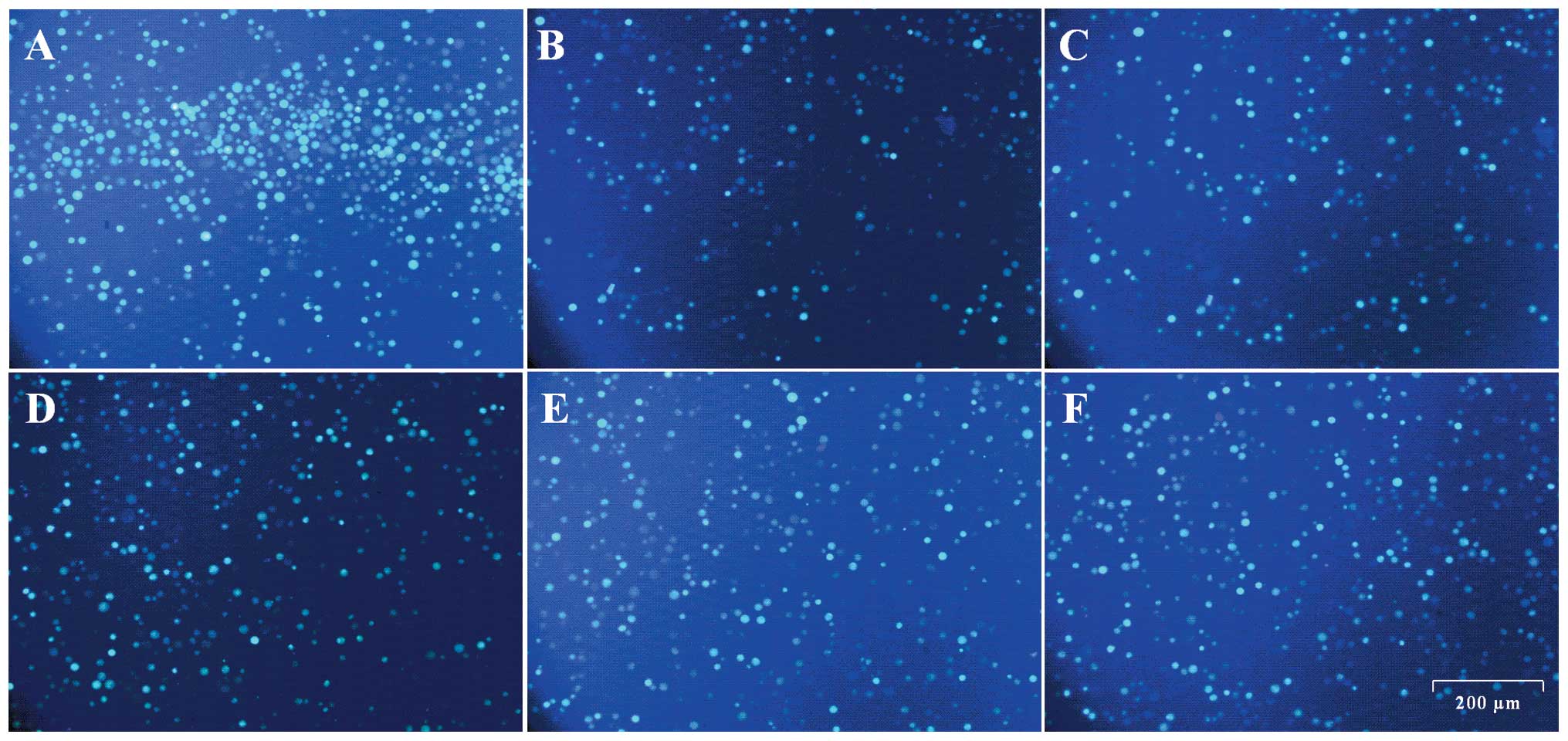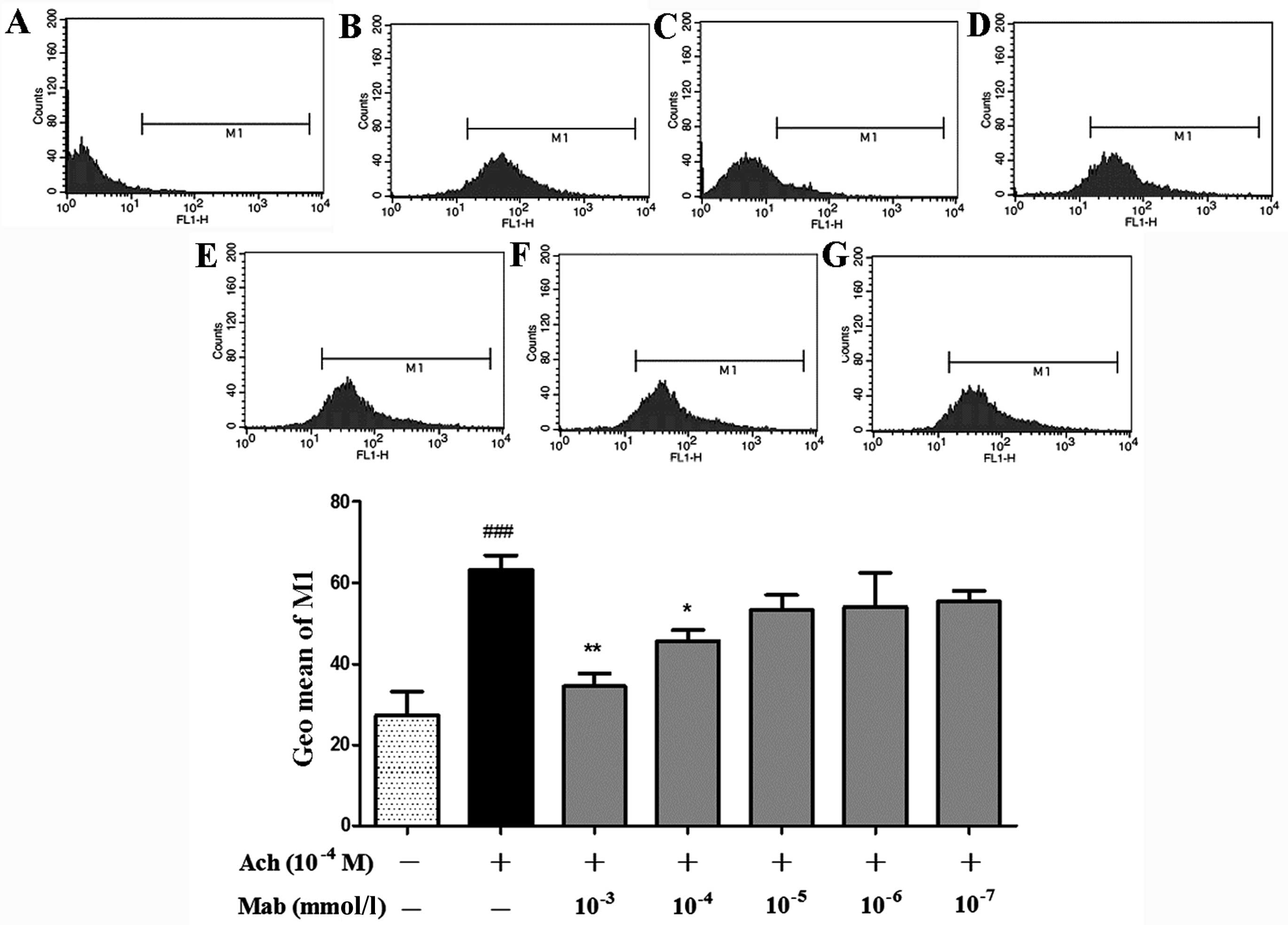|
1
|
James A, Mauad T, Abramson M and Green F:
Airway smooth muscle hypertrophy and hyperplasia in asthma. Am J
Respir Crit Care Med. 186:568–569. 2012. View Article : Google Scholar : PubMed/NCBI
|
|
2
|
Siddiqui S, Redhu NS, Ojo OO, Liu B,
Irechukwu N, Billington C, Janssen L and Moir LM: Emerging airway
smooth muscle targets to treat asthma. Pulm Pharmacol Ther.
26:132–144. 2013. View Article : Google Scholar : PubMed/NCBI
|
|
3
|
Noble PB, Pascoe CD, Lan B, Ito S,
Kistemaker LE, Tatler AL, Pera T, Brook BS, Gosens R and West AR:
Airway smooth muscle in asthma: Linking contraction and
mechanotransduction to disease pathogenesis and remodelling. Pulm
Pharmacol Ther. 29:96–107. 2014. View Article : Google Scholar : PubMed/NCBI
|
|
4
|
Koopmans T, Anaparti V, CastroPiedras I,
Yarova P, Irechukwu N, Nelson C, PerezZoghbi J, Tan X, Ward JP and
Wright DB: Ca2 handling and sensitivity in airway smooth
muscle: Emerging concepts for mechanistic understanding and
therapeutic targeting. Pulm Pharmacol Ther. 29:108–120. 2014.
View Article : Google Scholar : PubMed/NCBI
|
|
5
|
Boese M, Busse R, Mülsch A and
Schini-Kerth V: Effect of cyclic GMP-dependent vasodilators on the
expression of inducible nitric oxide synthase in vascular smooth
muscle cells: Role of cyclic AMP. Br J Pharmacol. 119:707–715.
1996. View Article : Google Scholar : PubMed/NCBI
|
|
6
|
Dimitropoulou C, White RE, Ownby DR and
Catravas JD: Estrogen reduces carbachol-induced constriction of
asthmatic airways by stimulating large-conductance voltage and
calcium-dependent potassium channels. Am J Respir Cell Mol Biol.
32:239–247. 2005. View Article : Google Scholar : PubMed/NCBI
|
|
7
|
Wang IY, Bai Y, Sanderson MJ and Sneyd J:
A mathematical analysis of agonist- and KCl-induced Ca(2+)
oscillations in mouse airway smooth muscle cells. Biophys J.
98:1170–1181. 2010. View Article : Google Scholar : PubMed/NCBI
|
|
8
|
Yamamoto H, Nagata M, Tabe K, Suzuki S,
Maruo H, Sakamoto Y, Yamamoto K and Dohi Y: The inhibitory effect
of long-acting beta-adrenergic agonists, mabuterol, clenbuterol and
fenoterol on ‘morning dipping’ in patients with asthma. Arerugi.
39:21–27. 1990.(In Japanese). PubMed/NCBI
|
|
9
|
Osada E, Murai T, Ishizaka Y and Sanai K:
Pharmacological studies of mabuterol, a new selective beta
2-stimulant. II: Effects on the cardiovascular system and smooth
muscle organs. Arzneimittelforschung. 34(11A): 1641–1651.
1984.PubMed/NCBI
|
|
10
|
Akahane K, Furukawa Y, Ogiwara Y, Haniuda
M and Chiba S: Beta-adrenoceptor blocking effects of a selective
beta 2-agonist, mabuterol, on the isolated, blood-perfused right
atrium of the dog. Br J Pharmacol. 97:709–716. 1989. View Article : Google Scholar : PubMed/NCBI
|
|
11
|
Liu J, Zhang Y, Li Q, Zhuang Q, Zhu X, Pan
L and Cheng M: An improved method for guinea pig airway smooth
muscle cell culture and the effect of SPFF on intracellular
calcium. Mol Med Rep. 10:1309–1314. 2014.PubMed/NCBI
|
|
12
|
Mosmann T: Rapid colorimetric assay for
cellular growth and survival: Application to proliferation and
cytotoxicity assays. J Immunol Methods. 65:55–63. 1983. View Article : Google Scholar : PubMed/NCBI
|
|
13
|
Orlandi A, Calzetta L, Doldo E, Tarquini
C, Matera MG and Passeri D: Brain natriuretic peptide modulates
calcium homeostasis and epidermal growth factor receptor gene
signalling in asthmatic airways smooth muscle cells. Pulm Pharmacol
Ther. 31:51–54. 2015. View Article : Google Scholar : PubMed/NCBI
|
|
14
|
Liu B, Yang J, Wen Q and Li Y:
Isoliquiritigenin, a flavonoid from licorice, relaxes guinea-pig
tracheal smooth muscle in vitro and in vivo: Role of cGMP/PKG
pathway. Eur J Pharmacol. 587:257–266. 2008. View Article : Google Scholar : PubMed/NCBI
|
|
15
|
Pelaia G, Renda T, Gallelli L, Vatrella A,
Busceti MT, Agati S, Caputi M, Cazzola M, Maselli R and Marsico SA:
Molecular mechanisms underlying airway smooth muscle contraction
and proliferation: Implications for asthma. Respir Med.
102:1173–1181. 2008. View Article : Google Scholar : PubMed/NCBI
|
|
16
|
Yamakage M, Hirshman CA and Croxton TL:
Volatile anesthetics inhibit voltage-dependent Ca2
channels in porcine tracheal smooth muscle cells. Am J Physiol.
268:L187–L191. 1995.PubMed/NCBI
|
|
17
|
Wu BN, Lin RJ, Lo YC, Shen KP, Wang CC,
Lin YT and Chen IJ: KMUP-1, a xanthine derivative, induces
relaxation of guinea-pig isolated trachea: The role of the
epithelium, cyclic nucleotides and K channels. Br J Pharmacol.
142:1105–1114. 2004. View Article : Google Scholar : PubMed/NCBI
|
|
18
|
Bergner A and Sanderson MJ:
Acetylcholine-induced calcium signaling and contraction of airway
smooth muscle cells in lung slices. J Gen Physiol. 119:187–198.
2002. View Article : Google Scholar : PubMed/NCBI
|
|
19
|
Perez JF and Sanderson MJ: The frequency
of calcium oscillations induced by 5-HT, ACH and KCl determine the
contraction of smooth muscle cells of intrapulmonary bronchioles. J
Gen Physiol. 125:535–553. 2005. View Article : Google Scholar : PubMed/NCBI
|
|
20
|
Kawakami Y: First clinical studies on
mabuterol. A summarizing report. Arzneimittelforschung. 34(11A):
1699–1700. 1984.PubMed/NCBI
|
|
21
|
Gosens R, Zaagsma J, Grootte Bromhaar M,
Nelemans A and Meurs H: Acetylcholine: A novel regulator of airway
smooth muscle remodelling? Eur J Pharmacol. 500:193–201. 2004.
View Article : Google Scholar : PubMed/NCBI
|
|
22
|
Jude JA, Wylam ME, Walseth TF and Kannan
MS: Calcium signaling in airway smooth muscle. Proc Am Thorac Soc.
5:15–22. 2008. View Article : Google Scholar : PubMed/NCBI
|
|
23
|
Mahn K, Ojo OO, Chadwick G, Aaronson PI,
Ward JP and Lee TH: Ca(2+) homeostasis and structural and
functional remodelling of airway smooth muscle in asthma. Thorax.
65:547–552. 2010. View Article : Google Scholar : PubMed/NCBI
|
|
24
|
Gan LL, Wang MW, Cheng MS and Pan L:
Trachea relaxing effects and beta2-selectivity of SPFF, a newly
developed bronchodilating agent, in guinea pigs and rabbits. Biol
Pharm Bull. 26:323–328. 2003. View Article : Google Scholar : PubMed/NCBI
|
|
25
|
Hao Z, Zhang Y, Pan L, Su X, Cheng M, Wang
M, Zhao H and Wu Y: Comparison of enantiomers of SPFF, a novel
beta2-Adrenoceptor agonist, in bronchodilating effect in guinea
pigs. Biol Pharm Bull. 31:866–872. 2008. View Article : Google Scholar : PubMed/NCBI
|



